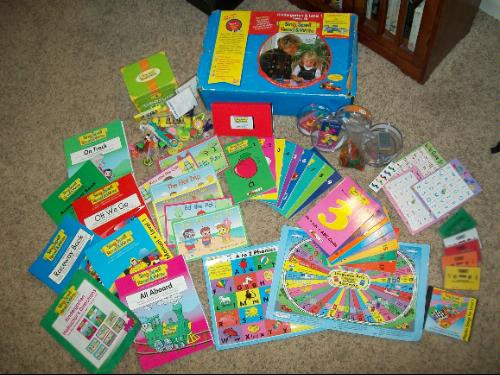
Today we notice everywhere around us someone has a computer. Computers are in homes, offices and even in cars. With so much technology, it is logical that our children someday must learn how to operate a computer.
Nowadays children start out as soon as they begin to push bottoms. They make computers for the youngest child. They make computers for 18 months and older so your child can start learning at the youngest age. As your child grows so do the computers. Therefore, your child will be able to learn from the skills of a computer for many of years, since educational toys provide them a learning tool. The computers today designed for young children is technology advanced that your child would think that he is actually operating a real computer.
What kinds of computers are available for my child?
There are all kinds of computer for your child to learn on. For the little ones that have their favorite characters, they may enjoy the Dora PC that allows them to Explore. Sponge Bob and his square pants, along with superman and many more may inspire your child to learn about technology.
Technology discovered that children attract to their favorite characters, so they designed the latest computers, including the laptops and desktops.
How do these computers teach our children?
These are computers designed for preschoolers, helping them to learn from 18 months and up. Now one might think that an 18 month would have no interest in computers, yet technology has made it possible inspire nearly any young one this age.
Benefits of Computer:
The computers will encourage cause and effect while your child enjoys exploration, shapes, numbers, and more. Your child will enjoy touching animals or instrument, to hear the related sounds.
Some of the activities that challenge kids, include the rewarding lights and sound effects, as well as the buttons on the mouse that light up, this computer has a memory matching game as well as a game to help to learn numbers and shapes.
For those long trips to Aunt Maggie’s house, a handy dandy carrying case with handle makes it easy for your child to learn on the move.
If you do not think your child will like that one, maybe your child will enjoy the Geosafair laptop. The laptop that uses cards like flash cards will help your child learn. With this laptop, it comes with 63 different cards with learning tools on both sides. This will make 126 sides, which are lessons. The cards are lessons that teach your child about wildlife, animals, science, language, math, maps, history, and trivia games and more. Each learning tool will inspire your child to continue learning new skills.
For the children that are still small and learning but are already in school there is a computer, which is the children’s laptop. This computer has much to offer, since your child will learn math games, word puzzle, telling time, memory skills, keyboard skill, music composition, English and Spanish translation is available also, which teaches your child new languages. The laptop comes with a realistic mouse with five different buttons to use.
How do I find these computers?
Some computers that teach your child learning skills are in all the big stores like at your local Wal-Mart or even Target stores have this computer. Some times your smaller computers are found in Rite Aide or Walgreen’s. They are using these computers in school as well as home. If you cannot find what you are looking for in your local stores you can go to the Internet and find them on there as well on amazon like below;





